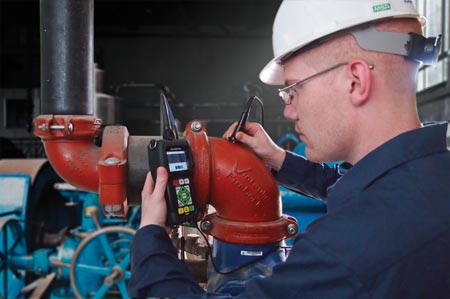Benefits of Ultrasonic Thickness Gauging
Ultrasonic thickness gauges offer a number of benefits over mechanical and optical measurement techniques in a variety of common manufacturing and in-service test applications, supporting quality control, reliability, and condition monitoring in a cost-effective and user-friendly way.

• Measurement from one side: Ultrasonic gauges require access to only one side of pipes, tanks, tubing, containers, hollow castings, large metal or plastic sheets, and other test pieces where the inside surface is impossible or difficult to reach.
• Completely nondestructive: No cutting or sectioning of parts is required, saving scrap and labor costs.
• Highly reliable: Modern digital ultrasonic gauges are highly accurate, repeatable, and reliable.
• Versatile: All common engineering materials can be measured with appropriate gauge setups, including metals, plastics, composites, fiberglass, ceramics, and rubber. Most instruments can be pre-programmed with multiple application setups.
• Wide measurement range: Ultrasonic gauges are available for measurement ranges as broad as 0.08 mm (0.003 in.) minimum to 635 mm (25 in.) maximum, depending on material and transducer selection. Resolution can be as fine as 0.001 mm or 0.0001 in.
• Easy to use: The vast majority of ultrasonic gauging applications use straightforward pre-programmed gauge setups and require only a small amount of operator interaction. While this tutorial discusses a number of advanced techniques and challenging measurements, advanced training in ultrasonics is not required in most cases.
• Instant response: Measurements usually take only one or two seconds per point and are displayed as a digital readout.
• Compatible with data logging and statistical analysis programs: Most modern handheld gauges offer both on-board storage for measurement data and USB or RS232 ports for transferring measurements to a computer for record-keeping and further analysis.